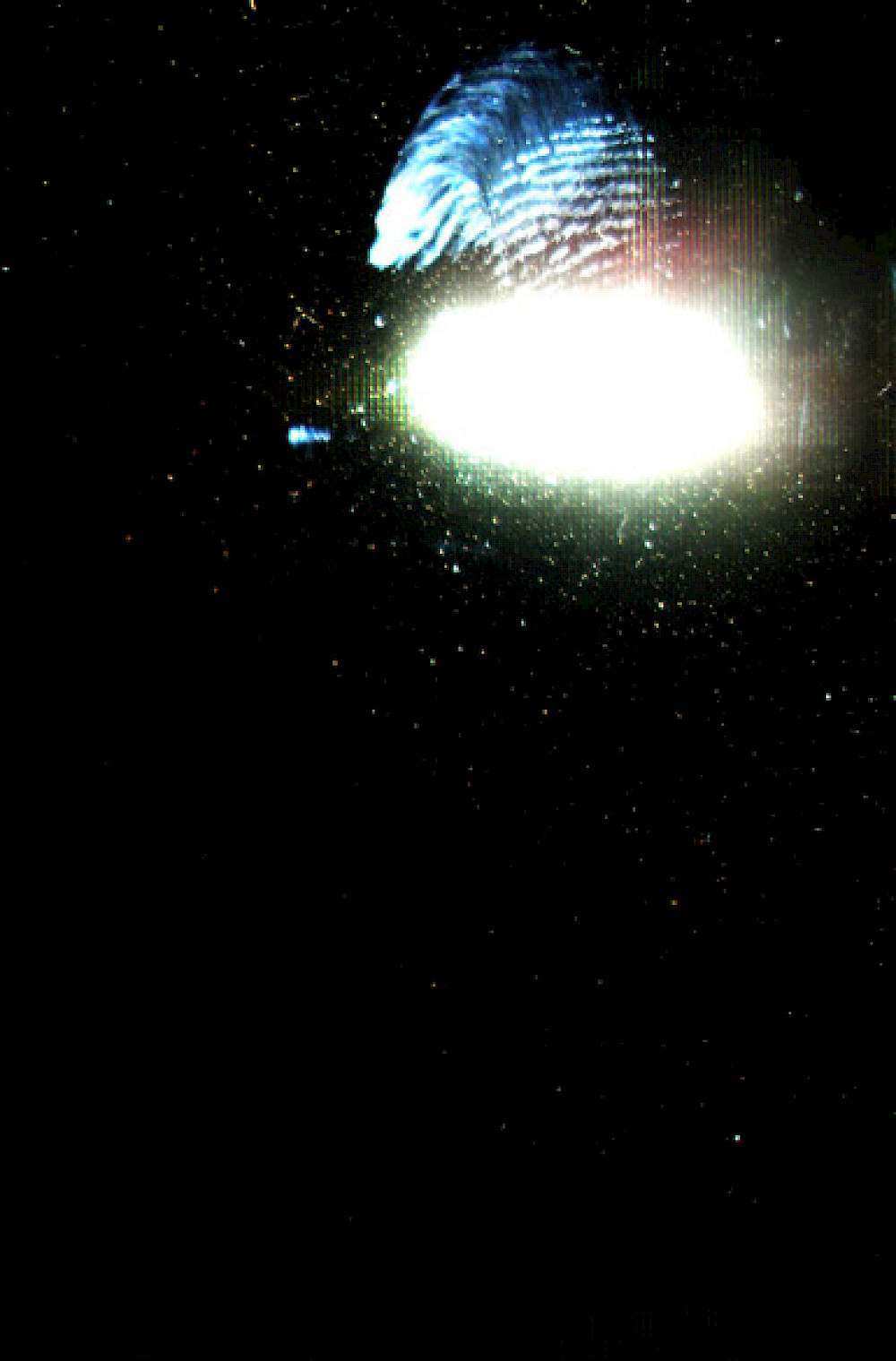12.05, 13.05, 15 — 18.05.2008
Bruno Beltrão has been developing a rigorous and exhilarating body of choreographic work for a number of years now with his Rio de Janeiro-based Grupo de Rua, based on the virile and explosive physicality of hip hop. Coming from the world of street dance, but also trained in contemporary dance and philosophy, Beltrão systematically deconstructs and shifts the codes and languages of hip hop. But far from stopping at this analytical stage, he also shows a consummate talent for choreographic writing. Three years after H2 comes H3. This time, the group has based its work specifically on hip hop techniques from breakdance. The show will have taken a whole year to mature, a year during which the dancers have also been undergoing training in theory. The Grupo de Rua is more than just a dance company: Beltrão considers it a tool of social emancipation as well.
(des) location as a new horizon
Bruno Beltrão’s daring new piece, H3, is a follow-up to the questions raised in the hit H2
By Nayse Lopez
In H2, Bruno Beltrão discovered a way to make the normally stationary hip hop vocabulary move. As a follow-up, H3 introduces a continuous flow of bodies. Just one of the many ways in which the new piece by Bruno Beltrão and his Grupo de Rua may be seen as a sequel to H2. H3 offers a fresh set of questions emerging from the scenes and gestures of the previous work. In H3, Beltrão displays a more complex approach to choreography that also heralds new influences. In the first week of April, on a beautiful sunny afternoon in his hometown – a half an hour drive from Rio de Janeiro – Beltrão and his dancers are going over the scenes and figuring out the final edition that will premiere 12 May at the Kunstenfestivaldesarts 08. The room has a horizontal line that surrounds it and a set of windows that filters different squares of light onto the hard concrete floor. “I am thinking of having a very similar atmosphere on stage,” he says, “just that and the sound. A set that is true to what we are doing, to the original surroundings of this creation.” In contrast with other hip hop companies, Beltrão and GR are not trying to bring the street onto the stage. Their goal is to bring their vocabulary, and the new set of questions it poses, to contemporary dance. H3 is a hypothesis in motion.
First, the flow question. H2 ended with a scene of all the dancers testing the limits of the stage space. Every moment of H2 had a sense of pre-designed space, of an “in-” and “out-of-scene”. This time, there is also an in and an out space, but the bodies flow through its boundaries in a much less formal way, almost as if by floating. In other moments, a duo or a trio dissolves and the dancers just pass by. After a while, these onstage trajectories construct a kind of complex map. For hip hop, a highly territorial vocabulary is a subversive approach to space.
The floor itself is almost a dancer in H3. There will be 9 men on stage. The piece has a different, more direct approach to falling and weight, reflecting the research that Beltrão and the company did during its creation. Specifically, Beltrão explored how hip hop and contemporary dance could relate to the dance floor in a new way. The result is vibrant and unexpected, with the dancers having much more control of their movements – but retaining the explosive energy of the street. Some duos even have surprising but understandable traces of capoeira movements of legs and torsos. (Yet this is only natural, as most urban dances in Brazil have distant roots in capoeira.)
In terms of dance images, Beltrão decided to explore or, better put, explode some hip hop signature movements into pieces. Take the “little ball” as an example. Rolling on the floor is considered to be the first movement that a hip hop dancer got down to on the dance floor. Beltrão uses it to establish a new set of floor lines. The running backwards phrase, a heterodox movement in a historically frontal dance, comes back in many ways, and plays a central role in displaying these dancers’ highly trained bodies from another perspective. But the dancers themselves are also introduced to a new perspective in H3. A difficult one, very foreign to hip hop: interaction with another body.
Full of duos and trios, H3 asks the question: how to deal with bodily contact in the frame of hip hop, a historically solo dance? Hip hop, like ballet, demands virtuosity: a host of complex neuro-motor activities must be executed within seconds. This fact has led to a vocabulary in which the other dancer’s body is, at best, a support (also not unlike ballet). In H3, Beltrão is investigating the possibility of real contact, a real pas de deux, hip hop-style. The result is not always perfect, but Beltrão is not interested in ideal solutions. H3 has a fresh hypothesis then: How do you make these dancers feel and rely on each other’s bodies? Can they accept that another’s body can and should modify their own performance?
There is a taboo against touching in hip hop. There is a cliché of contact in contemporary dance. Between the two, can we, as audience, locate and relate to the contact being established on stage by the men dancing in H3? What are we looking for? Can contact, paradoxically, be a dividing wall? In H2, Beltrão turned a provocative kiss between two men into a political and artistic landmark in hip hop. In that case, the encounter of two bodies was about breaking cultural barriers. This time, within the choreography, Bruno is proposing that hip hop could embrace contact as a tool in a way that is distinct from contact improvisation or other techniques in dance. But Beltrão offers no final answers.
Like Beltrão’s other pieces, H3 will be a special experience. In his mix of references, contemporary art meets street dance. Although he is one of the most important young artists of Brazil, Beltrão and his group survive only on foreign support; they have no financial support from government or private sponsors so far. The dancers come from the worlds of hip hop and street dance, and they share no common artistic training. Even so, they are being encouraged to read more and relate their work to theory and movement analysis. Xeroxed copies of Laban and Bergson lie on the table during rehearsal. Other books and mp3 and video recordings are also available. Beltrão has the mind of a DJ, a trait typical of his generation.
For the new premiere, the 28-year-old Beltrão discusses with the boys about the timing of some trios, shouts about some group scene that is off key. He is honest with me about having a hard times figuring out the soundtrack. The dancers, after another afternoon of very hard physical work, sit down and talk with me about the difficulties of the piece. As Beltrão and his assistant discuss editing the material, some dancers pack to leave while a band starts set up in a corner. The rehearsal space they rent for the day will be transformed into a ballroom in the evening.
As we leave the space, I imagine the party and couples that will be dancing later. I think about the flow of bodies and the structure that Bruno is proposing in this piece and as I drive back over the huge bridge that separates/unites our cities, I can’t help thinking how dancing together can be a very tricky thing.
Direction
Bruno Beltrão (assist. Ugo Alexandre)
Choreography
Bruno Beltrão
With
Bruno Duarte, Bruno Williams, Charlie Felix, Danilo Pereira, Eduardo Hermanson, Filipi de Moraes, Kristiano Gonçalves, Luiz Claudio Souza, Thiago Almeida
Light design
Renato Machado
Set design
Gualter Pupo
Costumes
Marcelo Sommer
Music
Lucas Marcier, Rodrigo Marçal - ARPX
Executive production
Mariana Beltrão
Presentation
La Raffinerie – Charleroi/Danses, Kunstenfestivaldesarts
Production
Gabriela Weeks
Coproduction
Grupo de Rua (Rio de Janeiro), Festival d’Automne à Paris / Ferme du Buisson (Marne-la-Vallée), Le Grand Théâtre de Luxembourg, International Arts Festival, Salamanca 2008 – Junta de Castilla y León, Kunstenfestivaldesarts
With the collaboration of
Hebbel-Am-Ufer (Berlin), La Ferme du Buisson
With the support of
Cavalera, Nike


